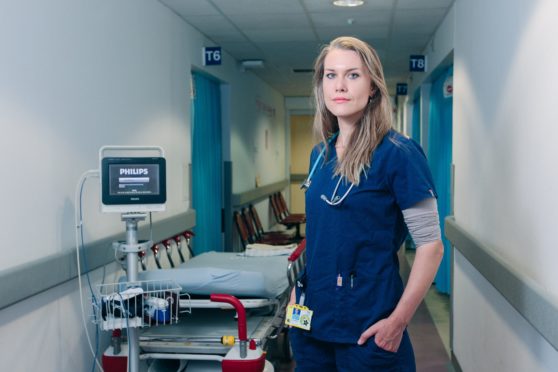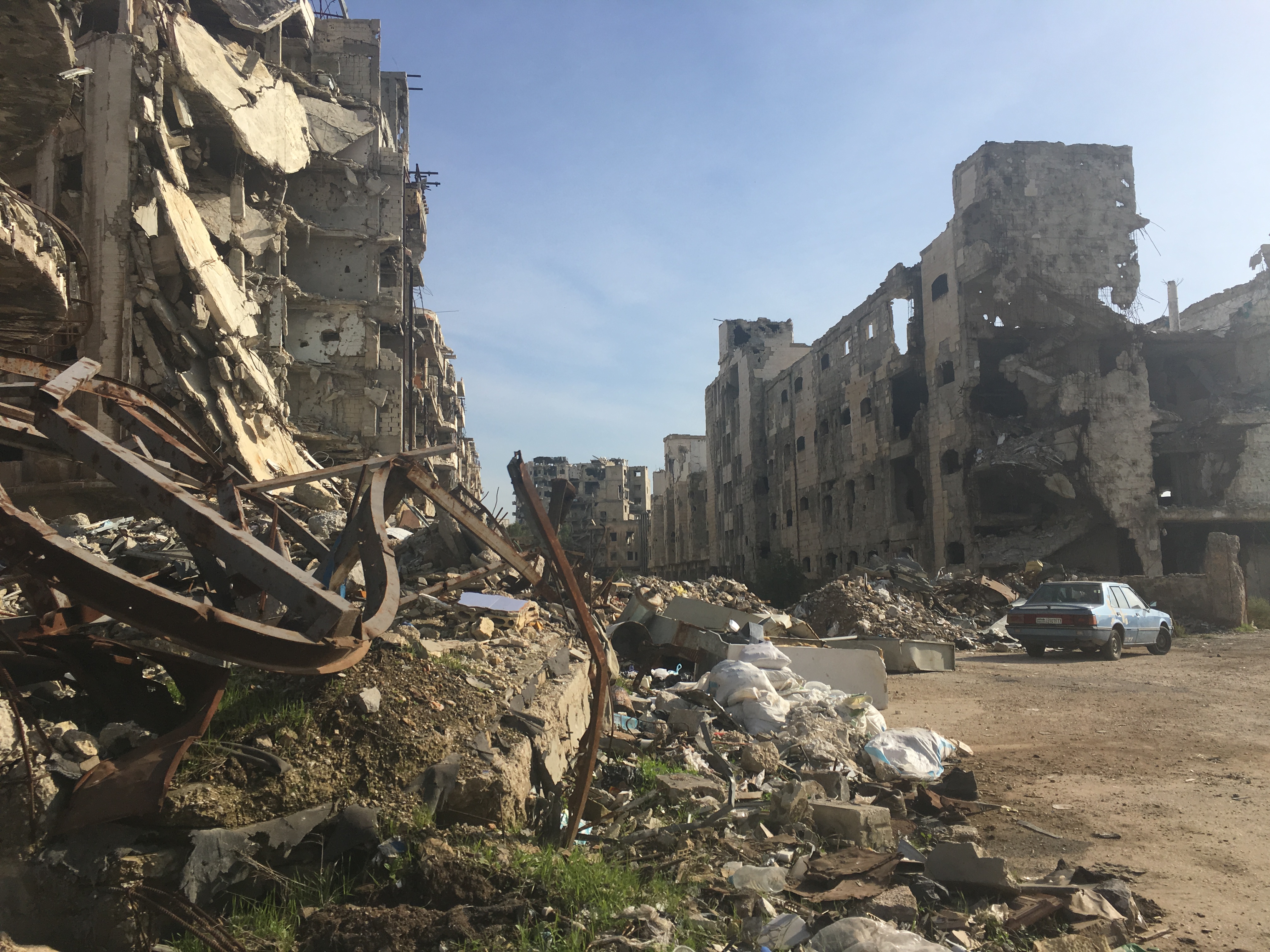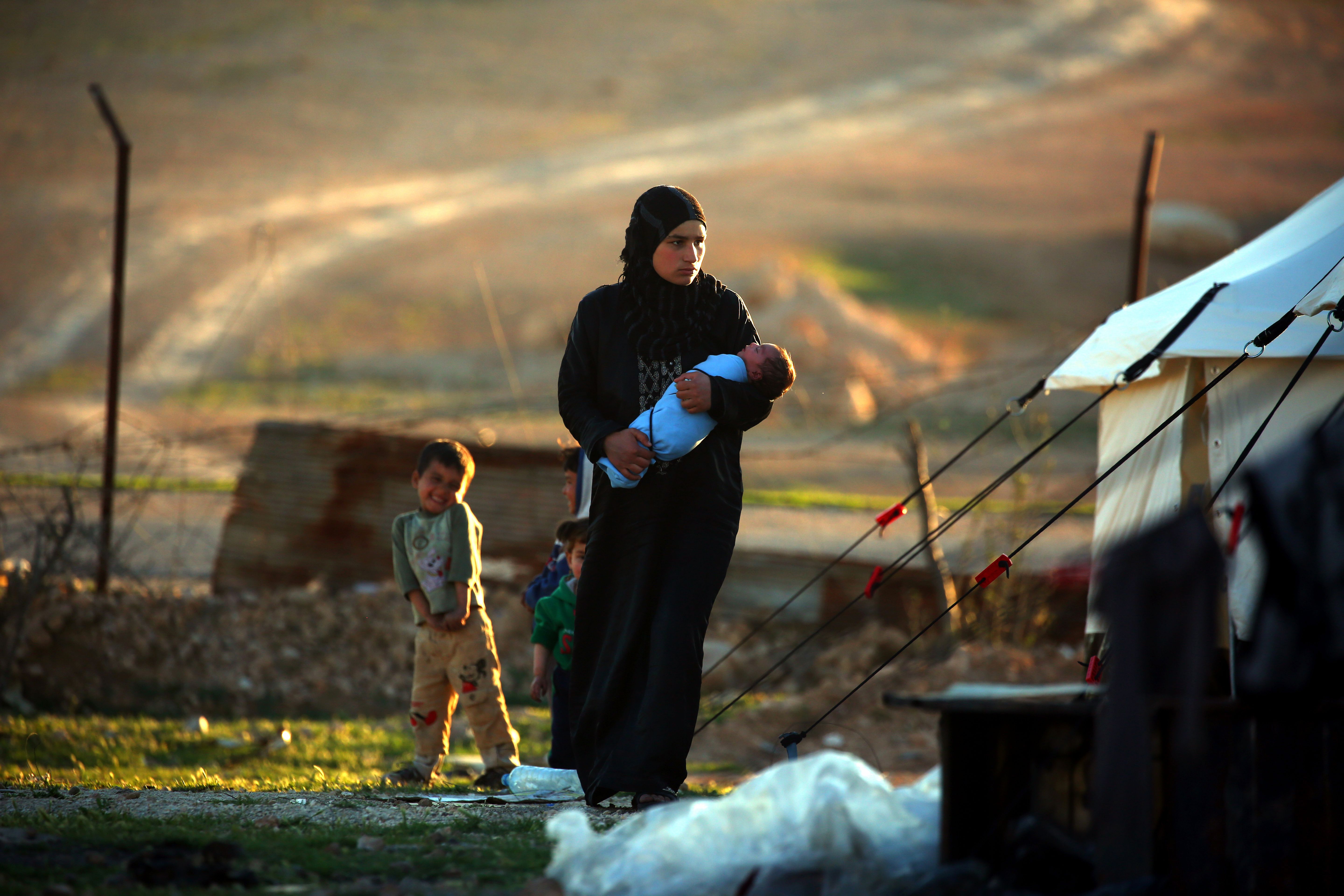
The young woman was struggling with a difficult labour and in need of urgent medical help.
But this was no ordinary delivery and no ordinary mum-to-be. The 23-year-old woman was the wife of an Islamic State fighter.
She and scores of other IS wives and children had fled as their caliphate fell before eventually making their way to the Ain Issa refugee camp in north-eastern Syria.
There they are kept separate from other refugees in a fenced-off enclosure in one corner of the camp. The medical centre was run by Medecins Sans Frontières (MSF), an international aid charity whose doctors and nurses save the lives of victims of wars, disasters and epidemics.
Among its team of volunteers in Syria in December 2017 was Erin Kilborn, an A&E doctor at Glasgow Royal Infirmary. After being told about the mum in labour, she and colleagues jumped into a van and raced across to the IS compound.
Erin, 35, said: “The mum was in danger of losing her life. She was one of several people in the camp in need of urgent medical help.”
With Erin’s help the mum safely gave birth, to a baby girl.
Those working for the aid agency do so on a “no judgment” basis, as Erin explained: “We help people of all ages, from newborn to elderly, with injuries and illness.
“The organisation treats anyone in need with dignity and respect, regardless of religion, culture or ethnicity.”
The Ain Issa camp lies near the regional capital of Raqqam, which was Islamic State’s last stronghold before being routed. Officially it is home to about 14,000 people but observers believe the real figure is closer to 20,000.
About 60 British men and women are thought to be held in prisons or camps after leaving the UK to join IS.
Hundreds of white tents, each home to one family, sit in straight lines with dusty paths running between them.
Around the official camp itself are groups of other tents and hastily-assembled shacks belonging to refugees who have not been fortunate enough to be allowed inside. Children play around, running along tracks and skipping between tents.
But it is far from being a safe haven. Former IS fighters lurk outside the perimeter fence, hoping to persuade former members inside the compound to escape, and last month hundreds of women and children fled after clashes between Turkish-backed militias and Kurdish forces.
Erin, originally from Renfrewshire, had travelled to the northern Syrian town of Kobane before being assigned to the camp. Boarding a white MSF 4×4 truck emblazoned with the charity’s logo, and stickers bearing a crossed-out rifle, symbolising no guns on-board, she made the hour-long journey along a dirt track to the camp.
There, she joined a team of volunteer nurses and one lone, exhausted doctor.
Erin said: “In Northern Syria patients suffer from disease and the legacy of serious injuries, blast injuries, burns common in war. But they also have mental health problems after seeing families and loved ones killed and lose their homes.
“They live in tents, a family to each one, and survive as best they can with food and water and clothing supplied. Lice and scabies are common and the families are often distraught at having to throw away the precious few belongings that are the few reminders of their old lives.
“They have to be destroyed to stop the infestation. Replacing clothes and bedding with new supplies is necessary, but traumatic.”
Erin has also worked at other medical centres in the district, including MSF’s hospital in Kobane.
There, she saw a nine-year-old boy admitted to A&E with full-thickness facial burns. A gas heater had exploded and struck him.
Receiving painkillers, and undergoing treatment on his searing injuries, what distressed the young victim most was not being able to see through his dressings.
Erin said: “We did what we could to treat his burns but it is upsetting to see a child so distressed.
“We have to remain professional and do what we can to help him cope.”
The Syrian surgeons and doctors offer good treatment but even the most experienced would not pretend they could match the care on offer at a large British teaching hospital.
“I would have loved to have taken him back to the UK but I couldn’t. We can’t”, said Erin.
“Trying to comfort a child like this is one of the hardest things you will do as a doctor.”
Another little girl was brought to the hospital by her distraught parents, who arrived at the gates reporting that their two-year-old had become seriously ill overnight.
Their daughter was struggling to breathe and her little ribs rose markedly as she gasped for air.
An X-ray revealed her right lung had collapsed following an infection.
As air came into her lung it escaped into her chest cavity, filled it and pushed the lung aside, leaving it little room to expand with enough oxygenated air in the next breath.
A pipe was inserted through her rib cage and the trapped air in the chest cavity escaped, allowing her to breathe again.
Antibiotics and other drugs killed the infection but Erin admitted to frustrations over the girl’s diagnosis.
“This was an X-ray I had not seen anywhere else I ever worked,” she said.
“She could have had TB. We felt there was definitely some underlying infection present which we could not diagnose because the X-ray was not specialised enough.
“That’s why we administer treatment for all possibilities.”
While the MSF medics offer unrivalled experience and expertise, they are careful to avoid patronising their Syrian colleagues.
“They do a good job with the equipment and resources they have and work under huge pressure with the large number of patients,” said Erin. “We work as a team and learn from each other. I share knowledge and skills and mutual respect is vital.”
Despite the “no guns” policy – as well as on vehicles, the signs adorn all doors in the hospitals and clinics – violence has become a way of life for some of the refugees.
In one hospital, said Erin, a family feud spilled into the A&E unit and shots were fired as staff ran for cover.
Next year Erin, who spoke at the World Extreme Medical Conference in Edinburgh recently about her work as a humanitarian medic, will reprise her MSF duties in Yemen.
It will be just the latest posting in a career that has seen her save lives in Central African Republic warzones, and in a specialist trauma centre for burns victims in Haiti.
“It is such a privilege to be able to be part of a team who take medical help to those who may otherwise go without,” she added.
“It’s why I became a doctor.”
Left behind: The families trapped in warzone
Syrian families have spoken about the terror of being trapped in a war zone as a Scottish charity today launches its Christmas appeal to help rebuild the fractured country.
Scottish Catholic International Aid Fund supplies food, medicines and medical care, as well as working with local people to rebuild their homes.
While millions fled the war-torn country, millions more were left behind, trapped and in fear of their lives. Here, Peter Swindon talks to just some of them.
Thouraya Masoud, 53, Homs
There was shooting everywhere. We were trapped with little food. We eat only soup and wheat.
My second son was carrying his children to the shelter at the fire station but there were bombs dropping so he had to run back here and we hid in the kitchen. If he had stayed outside he would have died. Our neighbours died.
We were trapped here for three years.
Sumia Atto, 51, Aleppo
When the conflict started, militia wanted my husband to go to the frontline and fight and he refused.
My husband was a taxi driver. He told them he was just trying to support his family. The next day they shot him six times in the car.
When we found him, he had been thrown away on a hospital floor.
I took him and buried him in the park near here – there are no cemeteries.
The next day I saw the son of the man who shot my husband driving our car. I know who did this.
Mouhamad Jasem Al Khalaf, 43, Homs

When the shooting started we tried to hide inside the house. But my wife was shot in the knee. There was a protest in the street and a bomb exploded and she was also hit by shrapnel.
There was fighting in the street. The battles continued for three years but we couldn’t take it. There were bombs falling on our roof and the building was ruined. My wife and I were worried about our six children. It was too dangerous so we left. Then we lived in a tent in Tadmor for two years.
When we came home the house was very badly damaged. There was no windows or doors. We eat, but sparingly.
Yorgo Saccal, 39, Aleppo
I escaped death twice. I was on a bus and a bomb hit nearby. It shattered all the glass, I was deaf because the explosion was so loud. And a shell hit our rooftop but thankfully, it didn’t explode.
I lost a lot of friends. I lost everything. My two sisters left with their children.
Before the war I didn’t pray. But now I have become closer to God. It is the food of the soul.
Elias Hassar, 49, Aleppo
I live here with my wife and three children but now there are additional expenses. Now we have to pay for water and electricity from generators just to survive.
When we left the house in the war here, we would make the sign of the cross because we didn’t know if we would come back.
My children stayed in school throughout. When they were there we would pray to God that they wouldn’t be hit by shells.
As a father I had to think about daily survival: what do I have to do for food, for water, for heat? There was no time to think about the future. And there was always the question: should we stay or go? Thank God, we survived.

Enjoy the convenience of having The Sunday Post delivered as a digital ePaper straight to your smartphone, tablet or computer.
Subscribe for only £5.49 a month and enjoy all the benefits of the printed paper as a digital replica.
Subscribe
 © DELIL SOULEIMAN/AFP via Getty Images
© DELIL SOULEIMAN/AFP via Getty Images